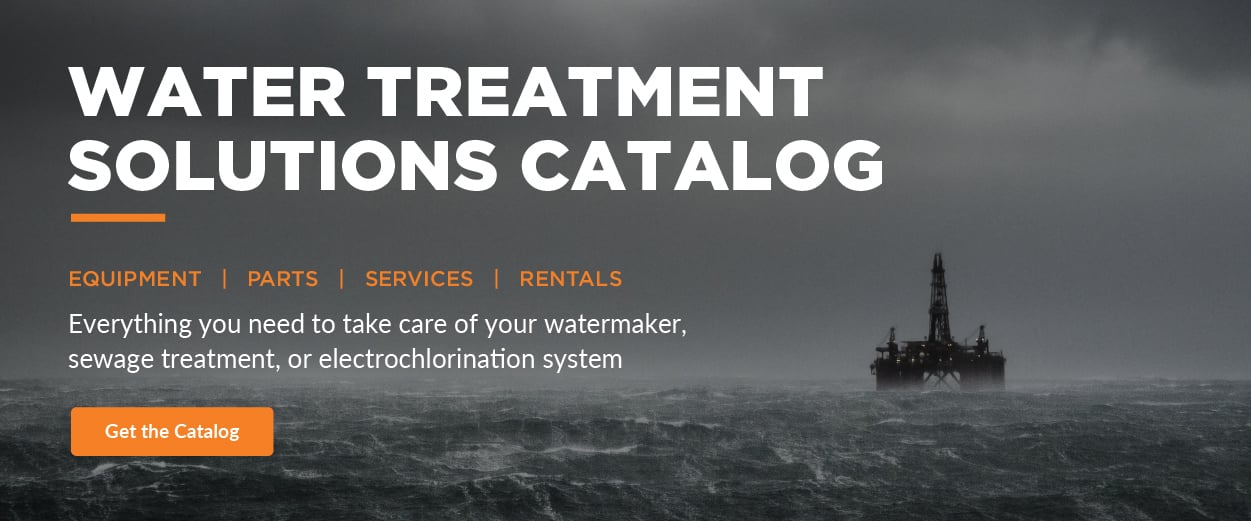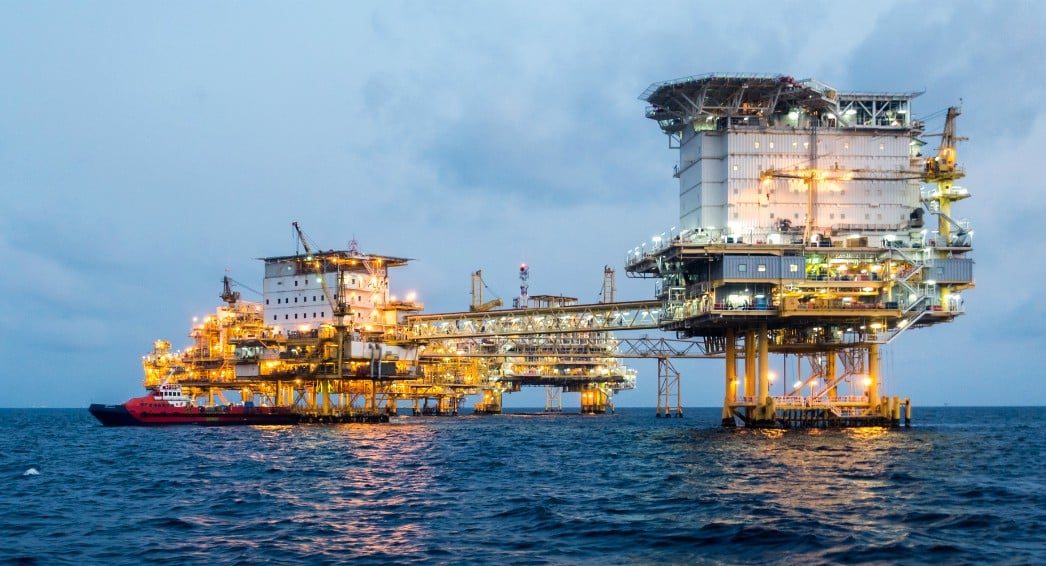How to Properly Maintain Your Desalination Unit
Water, water, everywhere: As the saying goes, when you’re out at sea, it can seem like your most precious commodity is just out of reach. Making sure that you have safe, potable water for your crew is vital for a successful venture, and chief among the tools you’ll need to accomplish this is a desalination unit.
Desalination systems are complex pieces of machinery that require proper care. Failing to maintain your desalination unit could result in expensive repairs - or even dangerous conditions for everyone aboard your offshore drilling rig or production platform. Fortunately, there are some easy ways to help ensure that you catch problems early.
What Is a Desalination Unit, and Why Is It Important for Your Vessel?
Desalination systems use reverse osmosis technology to treat seawater and turn it into fresh, safe water. This treated water can be used for a variety of purposes, including drinking, bathing, food prep, blowout preventer system testing, maintenance, and more. These units can bring a variety of benefits to your offshore facility , including high-quality water, less weight you have to bring on board in the form of water reserves, improved quality of life on board, and fewer necessary supply boat runs.
Desalination units of various sizes can supply safe water for even large crews of up to 400 people. However, they can do this only with proper care and maintenance; otherwise, they’re not safe for even one person’s use.
What Happens If You Don’t Maintain Your Desalination Unit?
Failing to properly maintain your desalination unit can result in unsafe, unsanitary situations aboard your vessel. Eventually, if not well maintained, your desalination unit will shut down—leaving you high and dry without a safe water source for your crew.
If your desalination unit breaks down abruptly, you may be looking at expensive repairs. Having to replace your unit or perform invasive repair work can cost anywhere from $16,000 to $75,000. On the other hand, if you take care of your desalination unit regularly and are able to spot small issues early on, a simple fix may be far more affordable (in the $5,000-$6,000 range).
The longer your system goes without regular maintenance and care, the worse its potential problems are going to get. As it turns out, there are few shortcuts. If you rely on hacks to go around the system in order to keep it running, you’re likely just doing more damage in the long run.
Regularly keeping up with the run hours or, at the very least, noting the feed flow rate, in gallons per minute, is key. It’s also important to manage the levels of the pH neutralizer. If your pH drops, the metal pieces of your system (including metal piping) will corrode, which will result in contaminated water—which could be detrimental to the people on board.
Ultimately, your unit will last longer if you take good care of it. Otherwise, you may be looking at increasingly expensive repairs as well as potentially dangerous conditions for your crew.
How to Maintain Your Desalination Unit When Offshore
There are several simple steps you can take to maintain your desalination unit on your own. Start by incorporating these practices, and your unit will be safer—and when something does go awry, you’ll be able to take corrective action more quickly.
Make a habit of doing a daily walk-by.
It may seem simple, but one of the best habits you can cultivate to take care of your desalination unit is a simple daily walk-by. Take the time to go to your unit, look over the visible surfaces carefully, check gauge pressures, flow rates, and TDS/Salinity reading... This walk-by doesn’t need to take too long or be too intense. Just take a few minutes to walk around your desalination unit.
Make sure that the pressure gauges are within an acceptable range, and that there are no leaks. There is no need for an in-depth daily inspection. To spot most red flags, just give your desalination unit a daily once-over to make sure that everything is as it should be.
Start a log to help with troubleshooting.
After you’ve established familiarity with your system by doing a quick daily inspection, you’ll begin to notice patterns with the gauges and how the system is behaving. Taking the time to write down these specifications in a log can assist with any necessary troubleshooting down the road.
There are gauges all over your desalination unit to monitor filter stages, how much pressure is going in and out of the system, flow meters, and more. Just by checking these gauges consistently, you’ll get plenty of great information on the performance of your desalination unit—from the flow rate of the pump to the salinity of the output. Take note of these levels, and over time, you’ll be better prepared to get a sense of how your system is doing when you see spikes and troughs in the data.
In your log, along with system specifications, note the maintenance steps you take as well. Report when you change the filters, and when you’ve added chlorine or neutralizer to the system. Take note of whether the filters are dirty, the flow rate of the pump, and the quality of the water.
Doing this can also help alert you to tiny issues before they become big ones when offshore. Often, one small problem with your desalination unit will require a simple part swap, or an easy repair. When one small problem compounds into three issues, though, the diagnosis will be harder. Ultimately, charts are useful for tracking symptoms to see if you can pinpoint what’s going wrong and when so that you can troubleshoot more effectively.
Change the filters and know when to refresh vital solvents and neutralizers.
Your desalination unit will need a variety of refills to do its job correctly. For example, the pH neutralizer will need to be refilled, and you’ll need to keep up with chlorine injections (otherwise, biological contamination can occur in the tank).
Change the cartridge or bag filters when you see a differential pressure of 15 psi across either one. The filters protect the membrane from dirt but they also protect the high pressure pump. Some pumps are now water lubricated and require a filtration efficiency rating known as Absolute where the degree of filtration is more uniform than typical nominally rated cartridge filters.. The cartridge filter is the last line of defense for the pump and membranes. Systems using a bag filter upstream of the cartridge filter will greatly reduce the number of cartridges used.
If you’re not using your desalination unit, store it properly to avoid damage.
You can preserve your system, including all membranes, almost indefinitely as long as you take proper precautions. Later, give it a good cleaning and check everything before putting your desalination unit into service again.
Understand that your system has protective checks in place, but it really does need a human to take care of it.
Your desalination unit is a sophisticated piece of technology. Because of this, it has methods in place to keep you safe, even when there’s been a bit of a maintenance lag.
A good example of this is your system’s TDS (water quality) meter and diverter valve. The diverter valve is controlled by the TDS meter. If it sees that the water quality from your system’s output is not meeting standards, it’ll divert the water from your storage tank dumping and dump the output overboard. This will help keep you and your crew safe until you’re able to figure out what’s going on.
The TDS meter also activates an alarm light, so you’ll be able to tell when it’s triggered and your system isn’t producing safe water. If that happens, look over your logs to see if you can spot anything that looks abnormal. If you don’t see anything out of the ordinary, or can’t figure out what is wrong, it may be a good time to call in a helping hand.
Know when to call in the professionals.
For any issues that are more involved than a routine changing out the filters and other easy maintenance, it’s a good idea to reach out to trained specialists. Your desalination unit is an extremely fine-tuned system that must be treated with care. It’s pressurized, it has a specialized electrical system, and much of its environment is flooded with highly flammable gas. Any tools that are used to maintain or fix it must be self-contained, with no sparks, or the entire system could ignite.
Relying on good techs is incredibly important! Do the daily maintenance yourself, and know when to call for help. When you do need help, H2O is ready to provide expert service and specialists to assist with your every need. Your desalination unit will benefit from daily maintenance and inspections, but it’s a good idea to have a professional on hand to make sure your system is safe. Whether you’re looking for education on the finer aspects of your desalination unit or you need a technician to troubleshoot, we can help.


